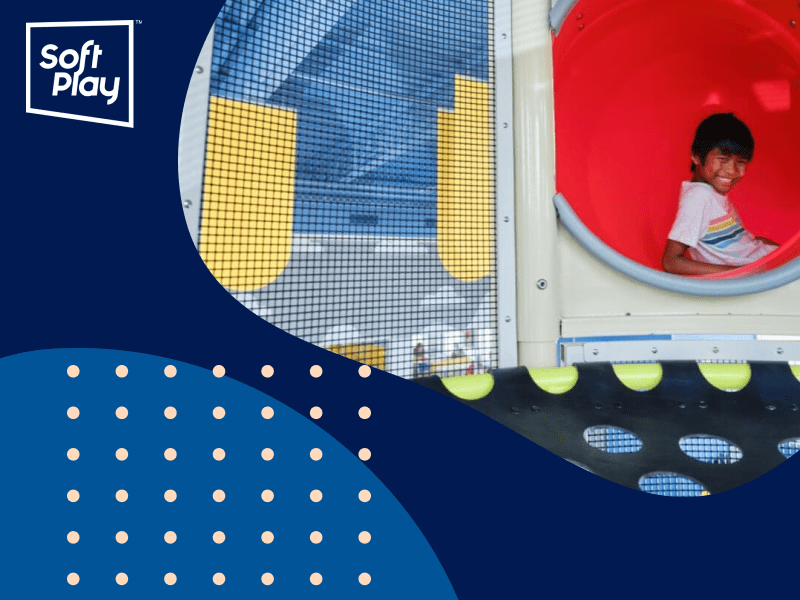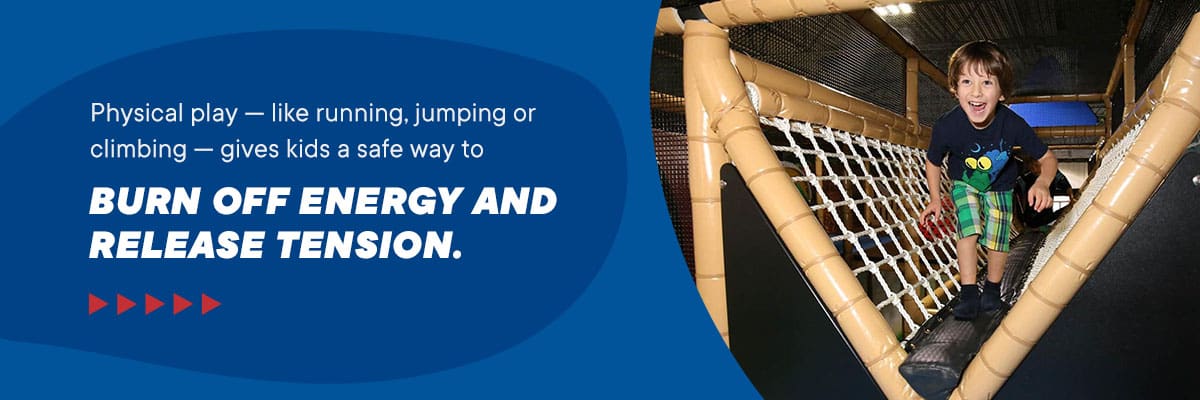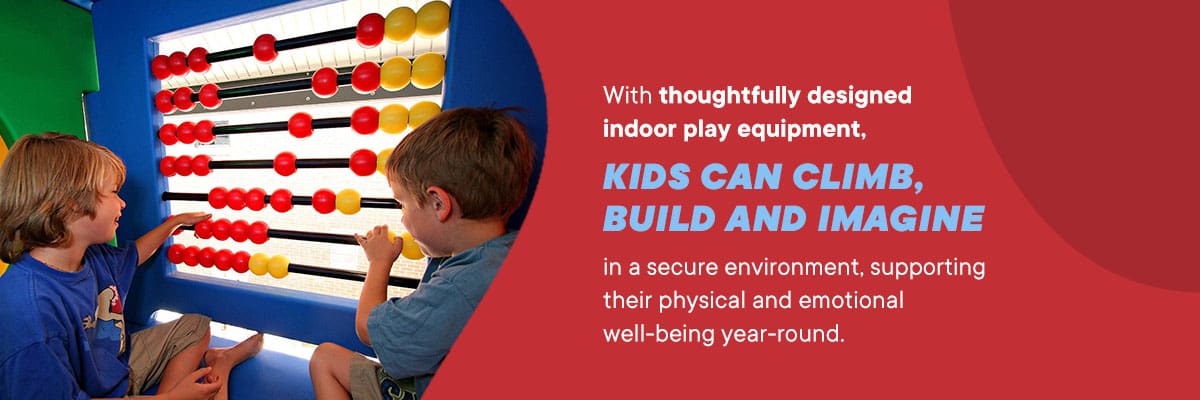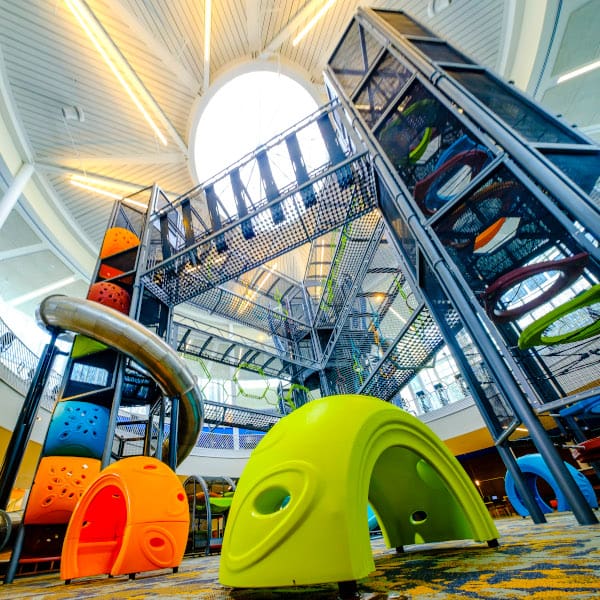How Play Reduces Stress and Improves Mental Health in Children

How Play Reduces Stress and Improves Mental Health in Children
Kids experience their own daily pressures, from schoolwork and social media to busy schedules and big emotions. As parents and educators, it’s natural to worry about their mental well-being and look for ways to help them thrive.
The good news is that play isn’t just fun — it’s a powerful, science-backed way to help kids manage stress, build emotional strength and grow into happy, resilient people.
In this article, we’ll explore exactly how play works its magic, what kinds of play boost emotional and mental health in kids, and how you can create the best environment for kids to flourish.
How Play Supports Kids’ Mental Health
The benefits of play are so important to kids’ development that Article 31 of the United Nations Convention on the Rights of the Child recognizes every child’s right to engage in age-appropriate play.
Why does play make such a difference for kids’ mental health? The answer lies in the brain and the heart. Play is a natural way for kids to process feelings, build confidence and find joy. Here’s how it works.
Neurological Benefits
Around 1 million new neural connections are formed every second during the first few years of life. This lays the groundwork for a child’s future learning and development.
Positive early experiences are known to create a foundation for strong brain architecture. Joyful play is instrumental in building these experiences by giving kids the freedom to explore, imagine and connect with others.
Emotional Processing
When kids play, their brains release “feel-good” chemicals like endorphins, dopamine and serotonin — natural mood boosters that help lower stress, ease anxiety and give them a sense of happiness and calm.
Play gives kids a safe space to act out worries, try on new roles and express feelings they might not have words for. Pretending to be superheroes or building a fort are great ways to work through real emotions in a way that feels safe and manageable.
Sense of Control
In play, kids are in charge. They make the rules, solve problems and decide what happens next. This sense of control is especially important for kids who might feel powerless in other parts of their lives, helping them build confidence and resilience.
In fact, the importance of play for children’s development can be seen throughout life. Studies suggest it’s essential for learning 21st-century skills like problem solving, collaboration and creativity, which are critical for adult success.
6 Ways Play Boosts Emotional and Mental Health in Kids
Play comes in many forms, each with its own special benefits. Here’s how different types of play help kids grow stronger, happier and more emotionally balanced.
1. Develops Emotional Regulation
Imaginative play and role-playing let kids practice handling big feelings in a safe, low-pressure way. By pretending to be a teacher, a doctor or even a dragon, kids learn to recognize emotions, try out different responses and see how their actions affect others. This practice helps them manage real-life emotions with more confidence and control.
2. Builds Resilience and Confidence
Every time a child solves a puzzle, climbs a new structure or figures out how to share a toy, they’re building resilience. These small victories teach kids that they can overcome challenges, bounce back from setbacks and trust in their own abilities. Over time, this “I can do it!” attitude helps them face bigger challenges with courage.
3. Creates Secure Social Bonds
Another way play boosts emotional and mental health in kids is by giving them opportunities to make friends and learn important social skills. Through games, teamwork and sharing, kids practice negotiation, empathy and cooperation. These experiences help them build strong, supportive relationships, which are so important to emotional well-being.
4. Provides a Healthy Outlet for Stress
Physical play — like running, jumping or climbing — gives kids a safe way to burn off energy and release tension. Moving their bodies helps them shake off worries, clear their minds and feel more relaxed. It’s a natural stress-buster that leaves kids feeling happier and more focused.

5. Exercises the Body for a Healthy Brain
Exercise through play has many benefits for kids, including building brain power, increasing self-esteem and promoting body positivity. However, only one in four kids in the U.S. gets the recommended amount of daily exercise. Pressure-free play is an effortless way for kids to move and explore, whether enjoying the benefits of water play, climbing trees or using playground crawling spaces and slides.
6. Strengthens the Parent-Child Bond
Playtime at home benefits everyone — parents who spend time playing with their kids tend to feel happier and their little ones benefit, too. Whether giggling through a game of peekaboo or turning the couch into a make-believe pirate ship, parents are helping their kids build a strong bond and develop essential life skills for a happy, healthy future.
Researchers have found that when parents and young kids play together, their brains can temporarily sync up — a phenomenon known as brain synchronization. This happens when their actions and attention are coordinated, often as the parent follows the child’s lead during play.
This shared brain state helps boost learning, making playtime with a parent especially engaging and effective for young kids. When a child picks a toy and the parent joins in, it keeps the child interested and supports deeper learning through their shared experience.
Unstructured Play for Independent Growth
Not all play is created equal. While organized sports and adult-led activities have their place, the benefits of play truly shine when it is unstructured and child-led. This kind of play gives kids the freedom to follow their curiosity, make their own choices and discover what excites them.
Here’s how unstructured play works its magic:
- Providing freedom to explore: When kids lead the way, they learn to solve problems, think creatively and develop their own interests. There’s no right or wrong way to play — just endless opportunities to learn and grow.
- Building motivation: Unstructured play helps kids develop intrinsic motivation — the drive to do things because they’re interesting or fun, not just because an adult says so. This self-motivation is a key ingredient for lifelong learning and happiness, and finding joy in exercise and movement.
- Encouraging creativity: With no set rules or outcomes, kids can invent new games, build imaginary worlds and express themselves in unique ways. This creative freedom is essential for developing flexible thinking and problem-solving skills, which are increasingly important in the job market.
How to Encourage More Beneficial Play
You don’t need fancy gadgets or a huge backyard to help kids get the most out of play. With a few simple strategies, you can create an environment where play — and all its mental health benefits — can flourish.
Create a Dedicated and Safe Play Space
Designating a specific area for play — whether it’s a section of the basement, a spot in the backyard or a small playground — sends a clear message to kids that play is a valued and important part of daily life.
Here are the top tips for creating a play space:
- It needs to be inviting and accessible.
- Ensure the area is free from hazards like sharp edges, loose cords or breakable items.
- Provide storage for their favorite things to encourage regular use of the space.
- Turn a corner into a dress-up area with child-sized furniture. This will send the message that kids are welcome in this space.
- Outdoors, lay stepping stones with colorful letters or numbers.
- Create a mini garden with small potted plants, buckets and kiddie gardening tools.
- Create a play zone with upcycled items, like tires filled with soft material, and a basket of toys or a climbing wall.
Play in All Seasons
With all the evidence of how play reduces stress, you won’t want bad weather to stop play. By making provision for indoor play, you give kids a safe, engaging space to move, explore and have fun, no matter the forecast. This might be a dedicated room, a section of a classroom, a community center or a kids’ indoor playground.
With thoughtfully designed indoor play equipment, kids can climb, build and imagine in a secure environment, supporting their physical and emotional well-being year-round. Investing in indoor play solutions keeps playtime consistent and shows kids that their need for movement and creativity is always a priority.

Offer Open-Ended Toys and Equipment
Giving kids open-ended toys and equipment, like building blocks, art supplies or climbing structures, encourages them to use their imagination and creativity. Unlike toys with a single purpose or outcome, interactive play equipment can be turned into anything a child dreams up, from a castle to a spaceship or a work of art.
These kinds of toys invite kids to invent their own games, solve problems and tell stories — all essential for cognitive and emotional growth. By offering a variety of open-ended options, you empower kids to take the lead in their play and discover new ways to express themselves.
Balance Structured and Unstructured Time
While organized activities like sports, music lessons or dance classes offer valuable learning experiences, it’s equally important to make space for unstructured, child-led play. Free play gives kids the chance to explore their interests, make choices and develop independence without the pressure of rules or schedules.
Strive for a healthy balance by ensuring that your child’s week includes both structured activities and plenty of open time for spontaneous play. This approach allows kids to benefit from the guidance and skill-building of organized programs while also nurturing their creativity, problem-solving abilities and motivation through unstructured play.
How Much Time Matters
Research shows that robust, adventurous play can help prevent anxiety in children. Kids who spend more time playing adventurously tend to have better moods and fewer signs of anxiety. Giving them more chances for adventurous play, both at school and at home, can support their mental health. It’s important for communities to make sure all kids have safe places nearby for outdoor play.

Age-Appropriate Play
Each stage of childhood offers unique opportunities for play that support important developmental milestones. Here are examples of age-appropriate play to boost emotional and mental health in kids:
- 6 months: Simple games like peekaboo and pat-a-cake help babies develop self-control and motor skills while encouraging them to follow their own interests.
- 9 months: Imitation and hiding games strengthen babies’ attention, memory and self-control as they copy adults and search for hidden objects.
- 12 months: “Dump and fill” games with containers and safe objects help toddlers practice motor skills and learn about cleaning up in a fun, hands-on way.
- 18 months: Matching, sorting and memory games encourage toddlers to recognize patterns, copy motions and remember sequences, supporting early cognitive development.
- 2 to 3 years: Active songs and imitation games like “follow the leader” build self-control, memory and attention while letting toddlers take the lead in play.
- 4 to 7 years: Classic games like “freeze dance” and “Simon says” develop executive function, self-regulation and independence as they play with peers.
- 8 to 12 years: Challenging puzzles, strategy games and imaginative play improve memory, mental flexibility and creativity in older kids.
- 13 to 17 years: Activities like music, theater, sports and some video gaming support executive functioning and adaptability. They provide a healthy balance between downtime and activity.
Looking for Inspiration?
Whether in a small or large area, outside or indoors, backyards or commercial spaces, there are so many ways to spark kids’ imaginations and get them playing for healthy bodies and minds.
Looking for ways to tap into the benefits of play? Here are some real-world examples of what’s possible:
- The Kennedy Space Center used custom Soft Play® products to turn their space into a multiple-story interactive and immersive experience called Planet Play. Here, kids explore spaceflight and interact with various space-related elements, like the foam-constructed solar system and moon rocks.
- At the Topeka Rescue Mission, Soft Play designed a play area that resembles a palace courtyard. The mission focuses on kids experiencing homelessness, viewing the first five years of their lives as crucial in breaking the cycle. An essential part of their approach involves the power of play.
- Soft Play partnered with Typhoon Texas Waterpark to bring interactive water play elements to the park’s areas, enriching kids’ experiences and maximizing their fun.
- Mountain America Jurassic Jungle is a five-story indoor playground that allows families to explore the prehistoric world through play. Dynamic sculptures, play areas and interactives transform indoor play into an adventure designed to educate and excite.
- The two-story structure at the Children’s Museum of Atlanta allows kids to see the museum from a new perspective as they build their climbing skills and confidence.
Nurturing a Healthier Generation Through Play
Play helps kids manage stress, build emotional strength and connect with others. It’s a simple, natural way to support mental health.
Now that you know how play strengthens your child’s mental health, the best way to unlock these benefits is to create safe, engaging spaces where play can happen every day.
At Soft Play, we offer expertly designed, durable and creative play environments for homes, schools and public spaces. If you want to give kids the best start in life, contact us today to explore how we can help you create a space where every child thrives.

